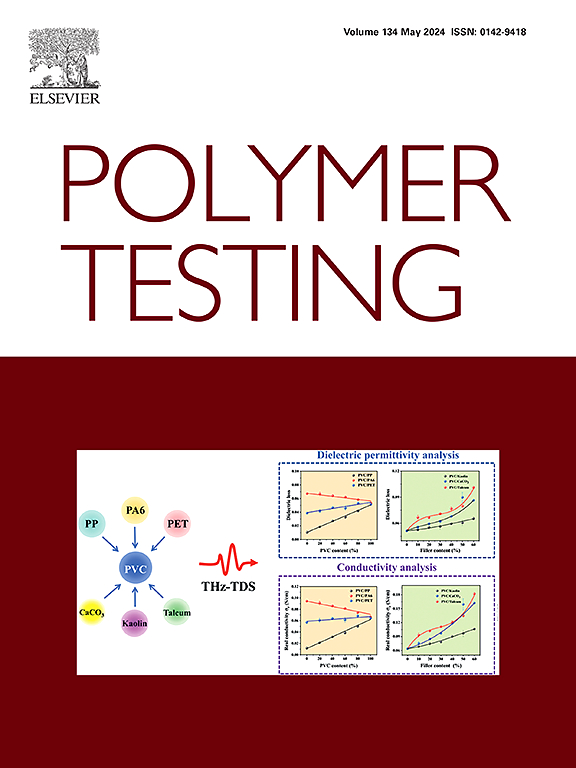The comparison of eight different common in vitro and ex vivo environments with in vivo conditions applying model collagen samples: Correlation possibilities and their limits
IF 5
2区 材料科学
Q1 MATERIALS SCIENCE, CHARACTERIZATION & TESTING
引用次数: 0
Abstract
New biomaterials are routinely evaluated for their degradation behaviour in the real body environment. Following the 3R strategy, in vitro simulated body conditions are often preferred. No studies that simultaneously compare such conditions with the real body environment have been conducted to date. Model porous collagen scaffolds were exposed for 21 days to eight different environments: simple salt-based and enzymatic media, human blood plasma, cell culture media with and without human fibroblasts and ex vivo model cortical bone, and subsequently compared with an in vivo environment represented by a pig peritoneum. The mechanical properties of the scaffolds were then determined via uniaxial compression testing, and the structural properties via the micro-CT, weight loss, infrared spectroscopy, X-ray diffraction and histological methods. Interestingly, the various analysed simulated body conditions caused differing alterations in the collagen scaffold characteristics when compared with the real body environment. The mechanical properties were similar during the first 7 days of incubation but diverged after 14 and 21 days. The structural properties varied significantly after just 7 days of incubation. The histological evaluation of the scaffolds exposed to the cellular, ex vivo and in vivo conditions revealed the poor ability of cells to completely populate the scaffolds, accompanied by the massive ingrowth of connective tissue into the in vivo exposed scaffolds, which resulted in their variable global behaviour. In conclusion, the value of in vitro simulated body environments lies in their screening capacity and feasibility; however, direct extrapolation to real body conditions needs to be verified going forward.
将八种不同的常见体外和体内环境与应用模型胶原样本的体内条件进行比较:相关性及其局限性
对新生物材料在真实人体环境中的降解行为进行常规评估。根据 3R 战略,体外模拟人体条件通常是首选。迄今为止,还没有研究将这种条件与真实人体环境同时进行比较。将模型多孔胶原支架暴露在八种不同的环境中 21 天:简单的盐基和酶介质、人血浆、含有和不含人成纤维细胞的细胞培养基以及体外模型皮质骨,然后与猪腹膜所代表的体内环境进行比较。然后通过单轴压缩测试确定了支架的机械性能,并通过微型计算机断层扫描、失重、红外光谱、X 射线衍射和组织学方法确定了支架的结构性能。有趣的是,与真实人体环境相比,各种模拟人体条件对胶原蛋白支架特性的改变各不相同。在培养的头 7 天,机械特性相似,但在 14 天和 21 天后就出现了差异。仅在培养 7 天后,结构特性就发生了显著变化。对暴露在细胞、体外和体内条件下的支架进行的组织学评估显示,细胞完全填充支架的能力很差,同时结缔组织大量生长到暴露在体内的支架中,导致其整体行为各不相同。总之,体外模拟体内环境的价值在于其筛选能力和可行性;然而,直接推断真实的体内条件还需要进一步验证。
本文章由计算机程序翻译,如有差异,请以英文原文为准。
求助全文
约1分钟内获得全文
求助全文
来源期刊

Polymer Testing
工程技术-材料科学:表征与测试
CiteScore
10.70
自引率
5.90%
发文量
328
审稿时长
44 days
期刊介绍:
Polymer Testing focuses on the testing, analysis and characterization of polymer materials, including both synthetic and natural or biobased polymers. Novel testing methods and the testing of novel polymeric materials in bulk, solution and dispersion is covered. In addition, we welcome the submission of the testing of polymeric materials for a wide range of applications and industrial products as well as nanoscale characterization.
The scope includes but is not limited to the following main topics:
Novel testing methods and Chemical analysis
• mechanical, thermal, electrical, chemical, imaging, spectroscopy, scattering and rheology
Physical properties and behaviour of novel polymer systems
• nanoscale properties, morphology, transport properties
Degradation and recycling of polymeric materials when combined with novel testing or characterization methods
• degradation, biodegradation, ageing and fire retardancy
Modelling and Simulation work will be only considered when it is linked to new or previously published experimental results.
 求助内容:
求助内容: 应助结果提醒方式:
应助结果提醒方式:


